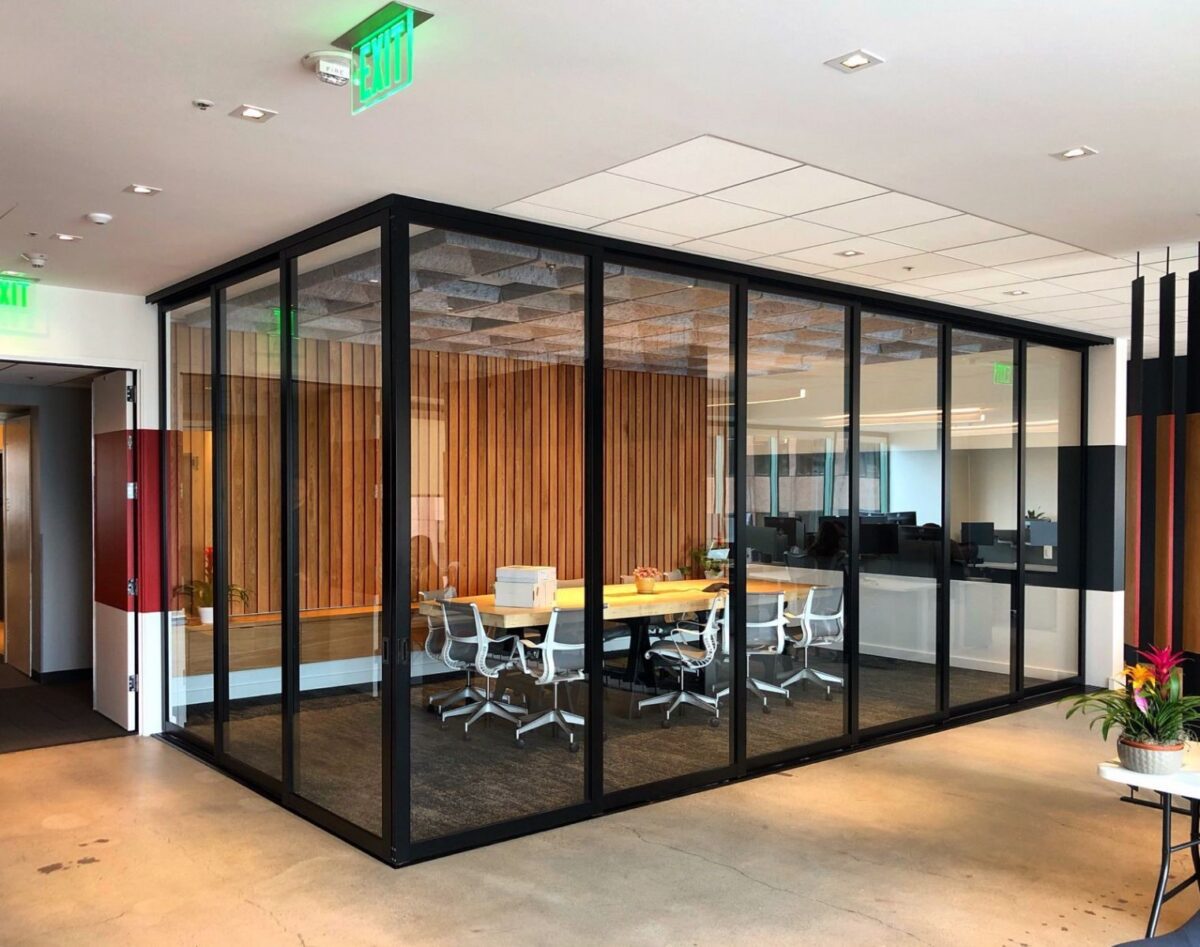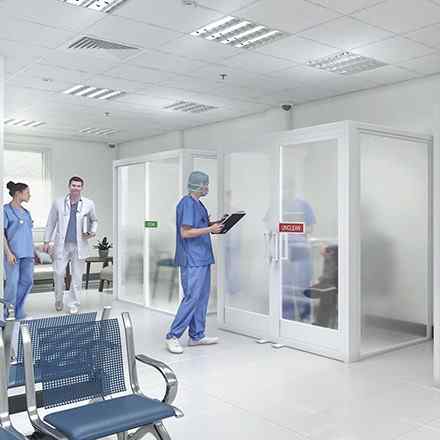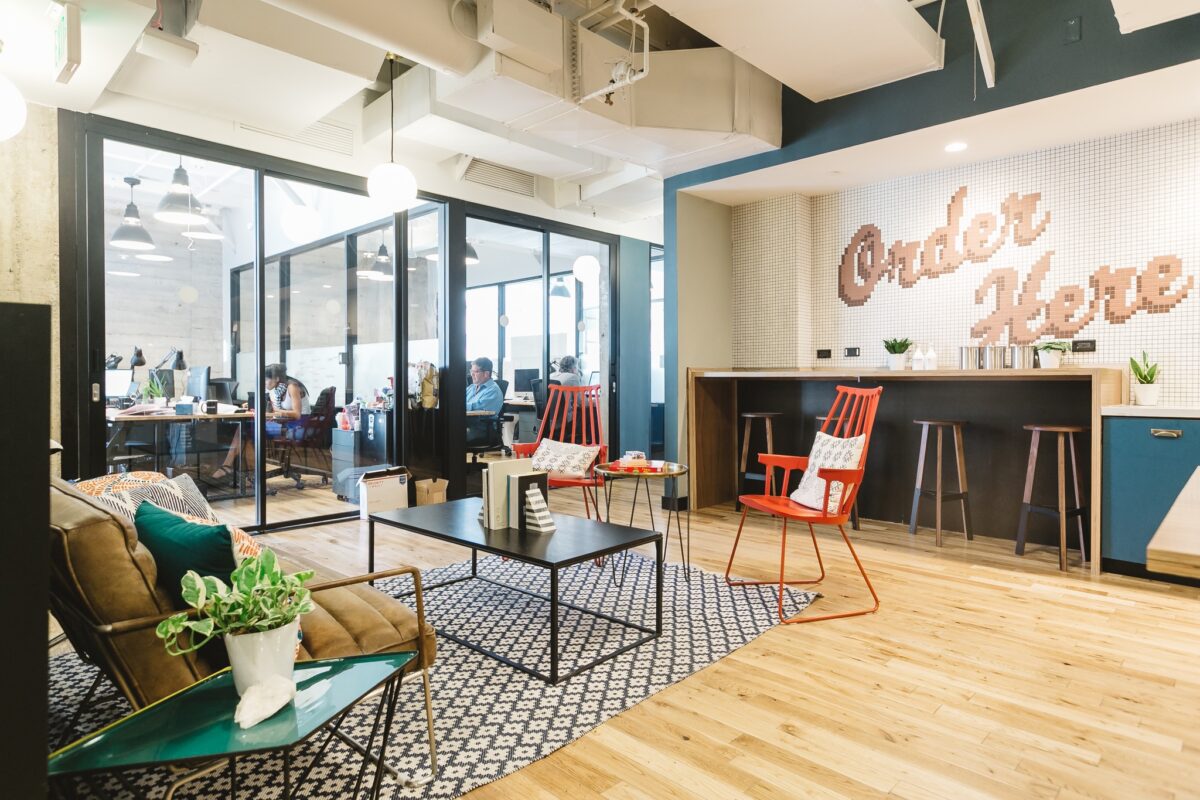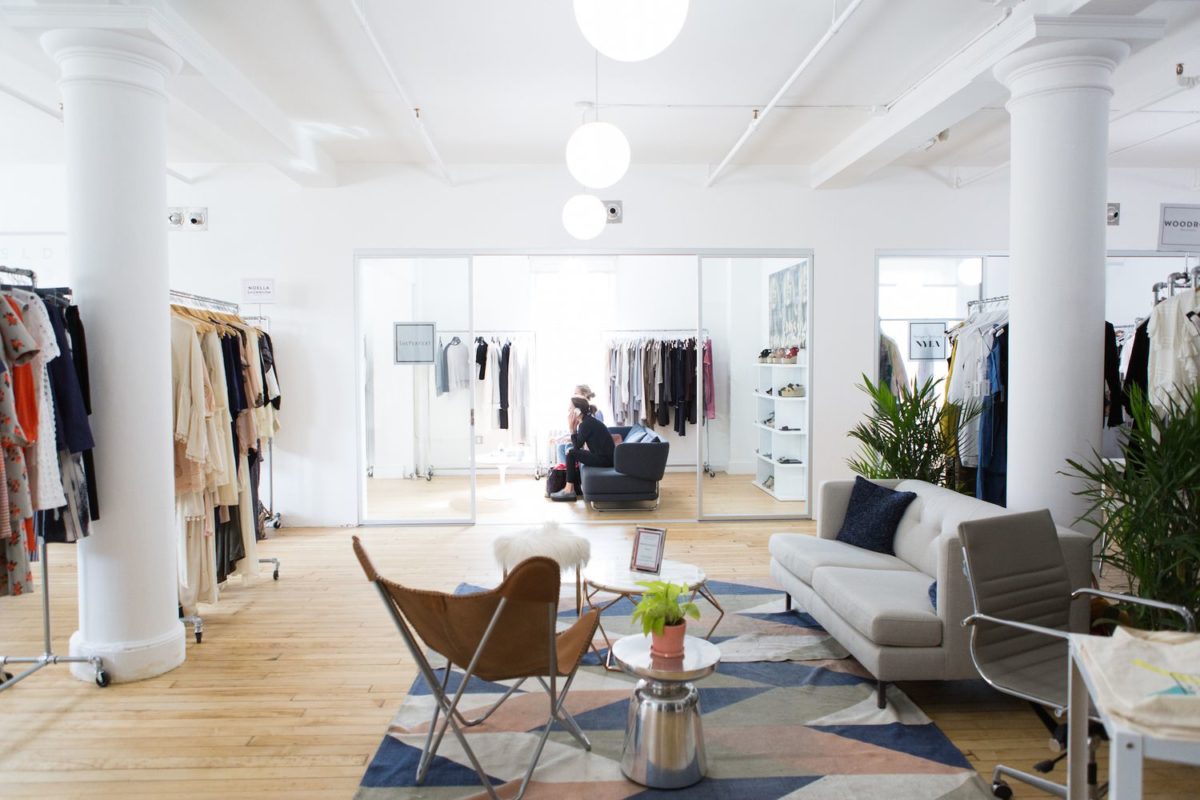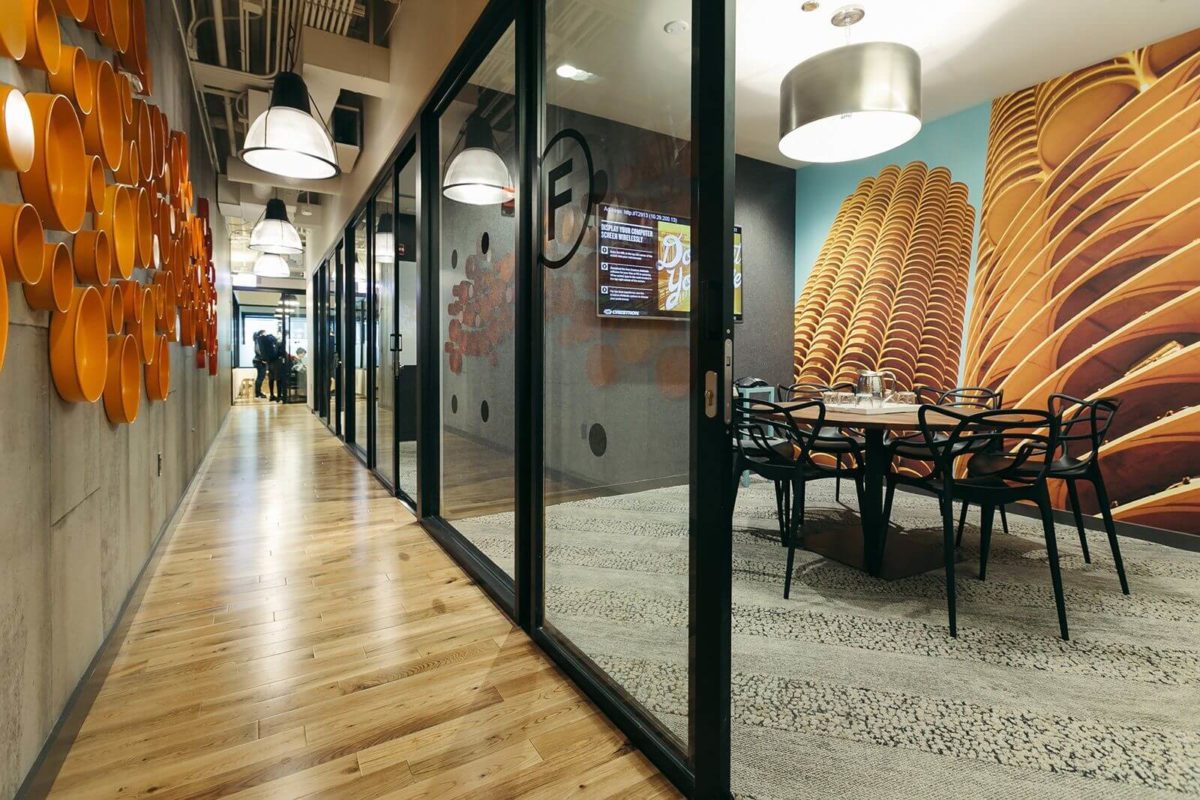If you want productive employees, you need healthy employees. You also need happy employees. Increasing the natural light in your office is one of the surest ways to improve wellness and boost energy levels. Next time you move into a brand-new office or update your workplace, ditch the light-obstructing cubicles and solid walls for high-quality glass partitions and sliding room dividers.
The Importance of a Healthy Workforce
Health is tied to performance, that much is clear. According to an official UK study carried out by the Department for Business Innovation and Skills, subjective well-being can improve cognitive abilities and processes, inspire creative thinking, and stimulate problem-solving.
Employees that report better wellness scores also tend to have a more optimistic attitude toward work and a greater proclivity to collaborate with others.1 Finally, research suggests that the physical layout of the workplace can have a major impact on innovation levels.2 In other words, wellness has a positive impact on performance and attitude across the board. Perhaps that’s why 65% of CEOs have already implemented a health and wellness strategy.3
Those that don’t have a wellness strategy—or those who want to improve their existing policies—can start by taking a look at their office.
Don’t Underestimate the Power of a Redesign
One of the simplest but most successful strategies is to redesign the office space to make it more employee friendly. Once upon a time, that theory may have been just that—an untested theory. In recent years, study after study seems to confirm the hypothesis: The physical workspace has a major impact on the employee experience.
A poorly designed workspace won’t inspire the kind of enthusiasm that most employers want. Employees spend many of their waking hours at work, and the environment can have a remarkable impact on their physical, mental, and emotional well-being. Who wants to spend the better part of their life in an unpleasant environment?
A well-designed office, on the other hand, can do the seemingly impossible: It can make employees want to come to work. It can also promote wellness, and even a small improvement in well-being scores can have a dramatic impact on performance and innovation.4
In spite of that, only 54% of employees say their design space allows them to work productively.3 Clearly, there’s room for improvement. How do business leaders solve the problem?
It’s simple: Let more light in.
Natural Light Is Key to a Healthier, More Productive Team
Many employers opt for natural light because of the energy savings, which can be significant, or because of the aesthetic advantages, which are indisputable. Just as important, however, are the health benefits.
Research has consistently shown that access to sunlight is critical to well-functioning bodies and minds. Employees who get plenty of natural light tend to sleep better, focus better, exercise better, and live better.
According to one study conducted by Northwestern Medicine and the University of Illinois at Urbana-Champaign and published in the Journal of Clinical Sleep Medicine, offices that featured windows provided 173 percent more white light than offices without windows. That’s probably why employees in those offices got on average 46 more minutes of sleep than their windowless counterparts, while also engaging in more physical activity.5
Why does natural light have such a major impact?
The Many Health Benefits of Natural Light
There’s a reason workers perform better under the stimulation of natural light. Sunlight is essential for a healthy body. It synchronizes our internal clocks, promotes vitamin production, and regulates hormones. Here are some ways natural light helps your body:
Establishes a Rhythm. For starters, the blue light emitted by the sun regulates the body’s circadian rhythm, also known as its sleep-wake cycle. When the sun goes down at night, our bodies know it’s time to start producing melatonin, the hormone that contributes to sleepiness. When the sun rises in the morning, they know it’s time to stop producing melatonin.6
Improves Sleep. It turns out those first few hours of morning sunlight are critical—more critical than we once believed. Exposure to sunlight in the morning sets your clock for your entire day and helps you sleep better at night. In fact, it may be one of the most important factors influencing the length and quality of your sleep.
Produces Vitamins. People have known for years that sunlight helps the body produce vitamin D, which is also crucial for anyone who wants to maintain optimal health. To begin with, vitamin D helps the body absorb calcium, which promotes bone growth. It also gives the immune system a boost, which helps the body to fight off disease. Finally, vitamin D has been shown to help people maintain a healthy weight.
Alleviates Eye Strain. Anyone who has spent long hours in a windowless office, under the glare of fluorescent lights, knows that artificial light can be draining. Whether they notice it or not, such poor lighting can also cause eyestrain. Letting in plenty of natural light can relieve overtaxed eyes, and that can help improve focus.7
Helps the Autoimmune System. Exposure to the sun’s UV rays may help suppress an overactive immune system. If true, that could help mitigate some of the worst symptoms of autoimmune diseases or even protect against their onset.8
What Natural Light Does for Your Mood and Your Energy Levels
When employees lack motivation, energy levels go down and, when energy levels go down, productivity drops. Every year, companies spend untold amounts of money on HR initiatives and team building programs designed to fix the problem—and for good reason. Yet, there is one thing many employers are missing—superior office design.
A well-designed office, particularly a well-lit office, can work wonders for mood and energy. Simply installing a glass partition, rather than a fiberglass cubicle or a solid wall, can increase the amount of light that flows through the entire office, and that can send energy and productivity soaring.4 Here’s why:
Better Sleep Equals Better Focus. Getting adequate sunlight during the day helps us sleep better at night. Better sleep improves overall health, but it has a particularly significant impact on our brains. For one, sleep helps the brain repair itself, process memories, and consolidates learning. Poor sleep equals poor cognitive function. Good sleep equals better focus, higher energy, and more wellness. To put it simply, employees who sleep well when the sun goes down are employees who can work well when the sun comes up.
More Sun Equals Less Depression. Recent research suggests that daily doses of sunlight can help alleviate the symptoms of depression—at least, a cyclical form of depression called Seasonal Affective Disorder. SAD tends to affect people during the winter months when the days are shorter. Simply allowing light to flow in through the office by using transparent office wall dividers can help employees keep the winter blues at bay.6
Of course, knowing that you need natural light is one thing. Knowing how to get it is another.
How to Increase the Natural Lighting in Your Office
There are many ways to increase the amount of sunlight that enters your workspace. The most obvious way is to find an office that has more windows and/or bigger windows. Unfortunately, for many businesses, that’s not an option. That would require moving to a new location or upgrading to premium real estate. For businesses on a tight budget, particularly small businesses or start-ups, the cost can be prohibitive.
Fortunately, there are easier, more innovative, and more cost-effective ways to solve the natural light problem:
- Glass Office Partitions: Transparent, glass office partitions from Space Plus are perfect when you want to delineate separate areas but don’t want to block the natural light from flowing from one space to another.
- Privacy Walls: These come in handy when you need to balance light with privacy. The frosted glass lets light into the room while remaining opaque enough to stop passersby from looking in.
- Glass Office Divider Walls: Space Plus’s see-through office divider walls provide floor-to-ceiling coverage without obstructing the light. They’re perfect for separating conference rooms, executive offices, showrooms, and indoor stores.
Let the Light In with Space Plus Interior Glass Door Solutions
It’s called daylighting—when architects and office planners harness the power of sunlight for their interior lighting needs.9 If current research is any indication, it’s critical for maintaining a happy, healthy workplace, and that’s essential for maintaining a productive, creative workplace.
Want to learn more about the innovative ways you can improve your office design? Take an online tour of the Space Plus catalog or come visit one of our many showrooms around the country to see how you can let the light in and boost your team’s enthusiasm.
Sources
- UK Department for Business Innovation and Skills. “Does Worker Wellbeing Affect Workplace Performance?” <https://www.gov.uk/government/uploads/system/uploads/attachment_data/file/366637/bis-14-1120-does-worker-wellbeing-affect-workplace-performance-final.pdf>
- “U.S. Workplace Survey 2016.” <https://www.gensler.com/research-insight/workplace-surveys/us>
- Leesman Review. Issue 15. 2014. Q3. <http://www.leesmanindex.com/Review25.pdf>
- Forbes Magazine. “How the Physical Workspace Impacts the Employee Experience.” <https://www.forbes.com/sites/jacobmorgan/2015/12/03/how-the-physical-workspace-impacts-the-employee-experience/#1ae399779ead>
- Northwestern Now. “Natural Light in the Office Boosts Health.” <https://news.northwestern.edu/stories/2014/08/natural-light-in-the-office-boosts-health>
- “The Link Between Natural Light and Health.” http://www.nbbj.com/ideas/2013/3/19/let-there-be-light/
- NC State University: Sustainability. “Shining Light on What Natural Light Does for Your Body.” <https://sustainability.ncsu.edu/blog/changeyourstate/benefits-of-natural-light/>
- S. News and World Report. “Host of Health Benefits Attributed to Sunlight.” <http://health.usnews.com/health-news/family-health/articles/2008/06/24/host-of-health-benefits-attributed-to-sunlight>
- Architectural Lighting. “The Benefits of Natural Light.” <https://www.archlighting.com/technology/the-benefits-of-natural-light_o>




